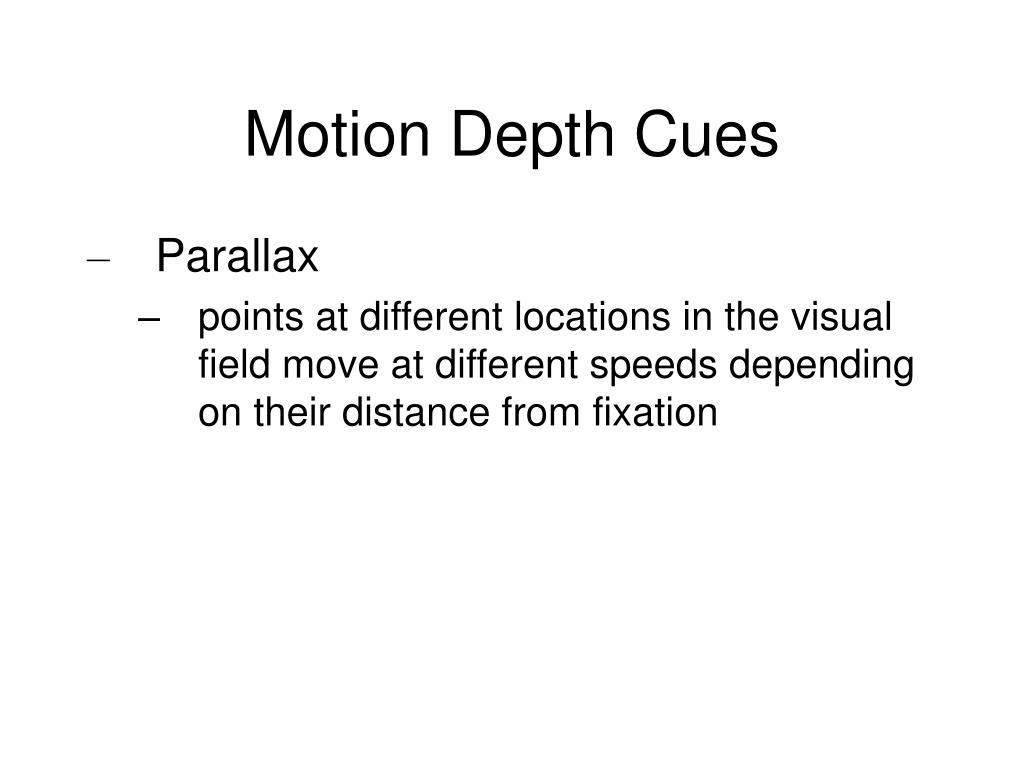
We examine a potential neural substrate in the middle temporal visual area for depth perception based on motion parallax, and we explore the nature of the signals that provide critical inputs for disambiguating depth-sign. Motion parallax:-Pictorial cues are useful in static scenes-If there is motion in the environment (observer motion), the powerful motion parallax cue becomes available-With a change in viewpoint, objects closer to an observer move a greater distance on the retina than those further away-Can provide a compelling sense of depth An example of the use of monocular depths:-Loud speaker moving. We review recent advances in elucidating the neural mechanisms for representing depth-sign (near versus far) from motion parallax. Although perception of depth based on motion parallax has been studied extensively in humans, relatively little is known regarding the neural basis of this visual capability. The image is providing information about the pictorial depth cue, motion parallax, linear perspective, light and shadow, texture gradient, accommodation. When an observer translates relative to their visual environment, the relative motion of objects at different distances (motion parallax) provides a powerful cue to three-dimensional scene structure. We examine a potential neural substrate in the middle temporal visual area for depth perception based on motion parallax, and we explore the nature of the signals that provide critical inputs for disambiguating depth-sign.ĪB - In addition to depth cues afforded by binocular vision, the brain processes relative motion signals to perceive depth. Although perception of depth based on motion parallax has been studied extensively in humans, relatively little is known regarding the neural basis of this visual capability. One of the more powerful sources of information is motion parallax, i.e., relative retinal image motion resulting from active movement 1 of the observer (Gibson, Gibson, Smith, & Flock, 1959 Helmholtz, 1925 ). When an observer translates relative to their visual environment, the relative motion of objects at different distances (motion parallax) provides a powerful cue to three-dimensional scene structure. motion parallax depth cue causes objects that are closer to a person to appear moving faster than the objects that are further away, hence causing change in.

N2 - In addition to depth cues afforded by binocular vision, the brain processes relative motion signals to perceive depth.

© 2016 The Author(s) Published by the Royal Society. Recent fMRI studies reported differential processing of these cues in different visual cortical areas ( Rokers et al., 2009 Ban et al., 2012 Seymour and Clifford, 2012 ). EY013644 (to G.C.D.) and by an NEI CORE grant no. The monocular depth information from motion parallax is normally extended with stereoscopic cues to depth.

were supported by a grant from the National Eye Institute (EY013644). T1 - The neural basis of depth perception from motion parallax


 0 kommentar(er)
0 kommentar(er)
